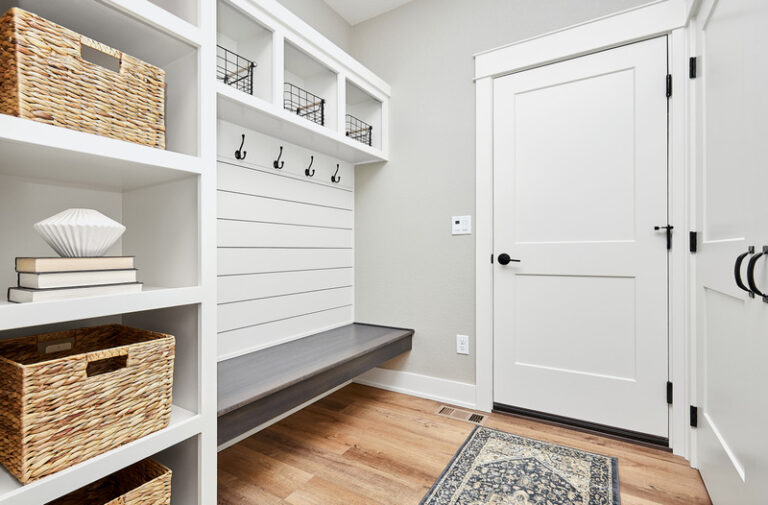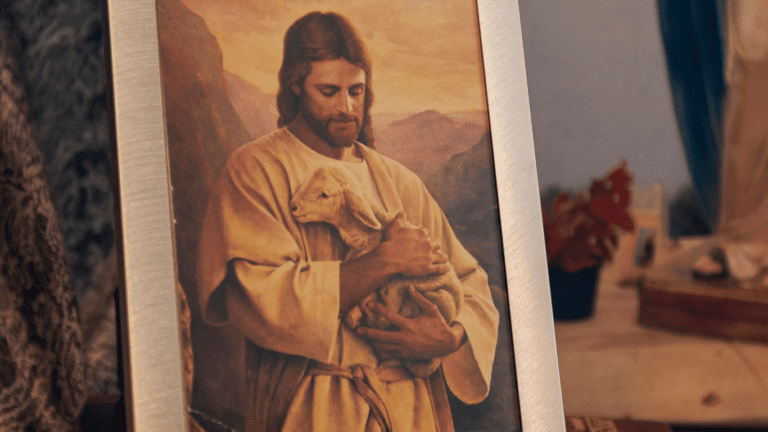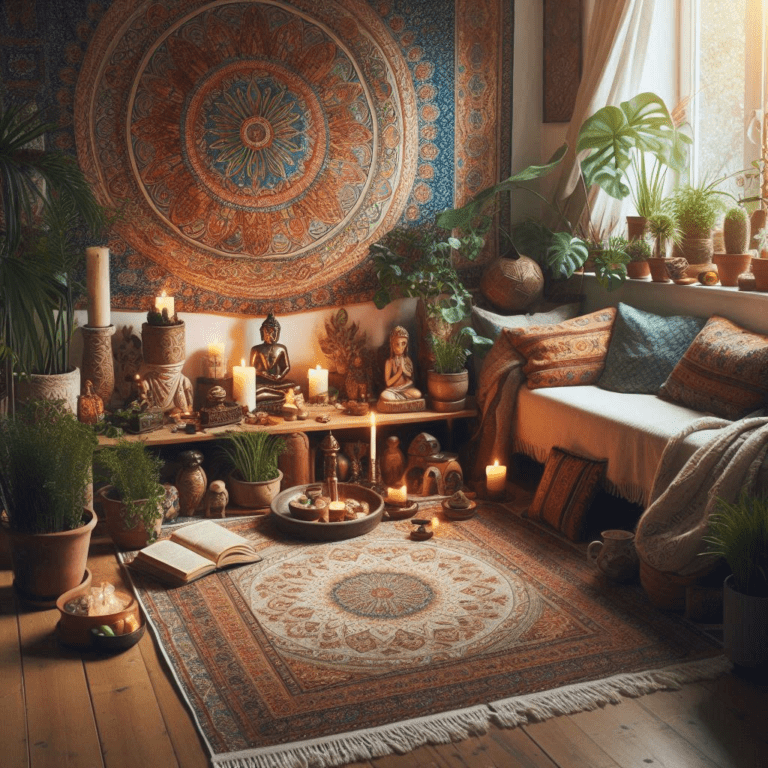Modern Art vs Classical Art: Integrating Both Into Your Home Decor
This post may contain affiliate links. As an Amazon Associate, I earn from qualifying purchases at no extra cost to you. Read my full disclosure.
When it comes to home decor, the choice between modern art and classical art can ignite a creative journey, offering diverse possibilities to infuse your living space with beauty and character.
By exploring the rich contrasts and synergies between these two artistic realms, you can create an ambiance that blends the timeless allure of classical art with the innovative spirit of modern art.
Whether you seek to pay homage to the masters of the past or embrace the avant-garde expressions of the present, this exploration of artistic juxtaposition will guide you in seamlessly implementing modern and classical art into your home decor.
In this article, we’ll explore a little history of both art styles and how to integrate both into your home decor. But first, let us discuss some key concepts related to his topic.
What is the Difference Between Modern Art and Contemporary Art?
Modern art and contemporary art are often used interchangeably, but they refer to different periods and artistic practices.
In summary, modern art refers to the artistic movements and styles from the late 19th century to the mid-20th century, characterized by a desire to challenge conventions.
Contemporary art encompasses the art created from the mid-20th century onwards, reflecting the diverse practices and concerns of the present time.
What is the Difference Between Classic Art and Classical Art?
The terms “classic art” and “classical art” are also sometimes used interchangeably too, but they actually refer to different concepts.
In summary, “classic art” refers to art that is considered exemplary or outstanding regardless of the time period or style, while “classical art” specifically refers to the art of ancient Greece and Rome.
Now let’s get to the point of this article!
Modern Art vs Classical Art: The Intriguing Blend of Tradition and Innovation

In the realm of art, there exists a fascinating interplay between modern art classics and classic art with a modern twist.
It is an intriguing approach that involves mixing traditional elements of classical art with the innovative spirit of modern art.
This blending of styles results in captivating creations that bridge the gap between the past and the present, honoring the timelessness of classic art while infusing it with fresh energy in a contemporary space.
Modern Art vs Classical Art: Style and Subject Matter
– Classical Art: As previously mentioned classical art refers to artworks produced during ancient times or inspired by the styles and techniques of ancient Greece and Rome.
It often focuses on realistic representations of figures, landscapes, and historical events. Classical art emphasizes balance, harmony, and idealized beauty.
– Modern Art: As mentioned before modern art encompasses various artistic movements that emerged from the late 19th century to the mid-20th century, such as Impressionism, Cubism, Surrealism, and Abstract Expressionism.
It breaks away from traditional representational art and explores new forms, concepts, and techniques. Modern art can be characterized by experimentation, abstraction, and subjective interpretations.
Modern Art vs Classical Art: Visual Characteristics
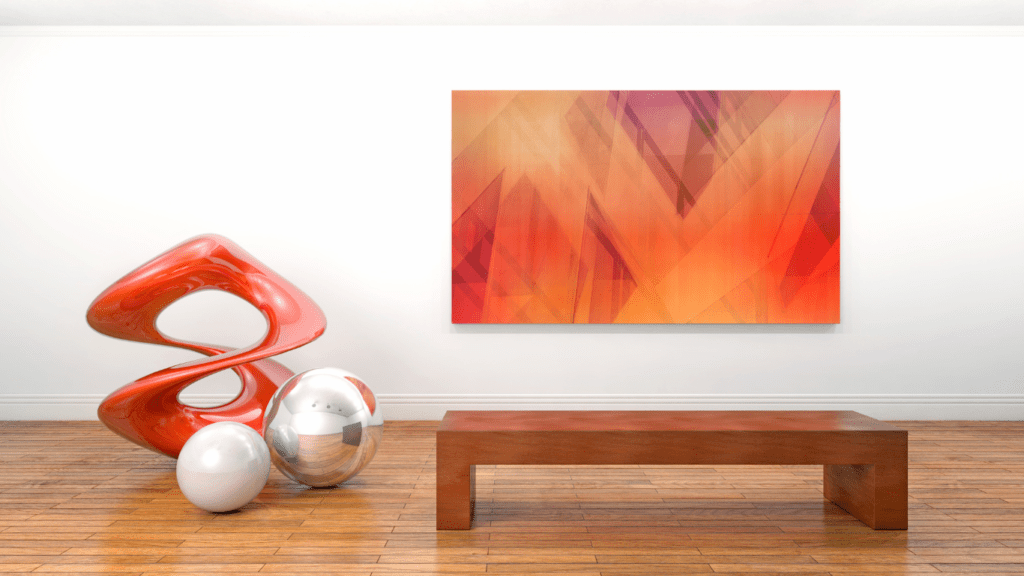
– Classical Art: Classical art tends to feature clear, detailed, and refined compositions. It prioritizes proportion, symmetry, and realistic representations.
Artists often use naturalistic colors and employ techniques like chiaroscuro (contrasts of light and shadow) to create depth and volume.
– Modern Art: Modern art embraces a wide range of styles and techniques. It can involve bold and expressive brushwork, vibrant colors, unconventional materials, and abstract or fragmented forms. Modern artists often prioritize personal expression, emotional impact, and pushing the boundaries of traditional artistic conventions.
Modern Art vs Classical Art: Impact on Home Decor
– Classical Art: Classical artworks, such as Renaissance paintings or sculptures, can bring a sense of elegance, timelessness, and historical richness to home decor. They can create a formal and refined atmosphere and work well in traditional or classic interior designs.
Classical art pieces are often seen as sophisticated and can be a focal point or accent in a room.
– Modern Art: Modern art adds a contemporary and dynamic touch to home decor. It can infuse spaces with creativity, individuality, and a sense of the avant-garde.
Modern art pieces can create visual interest and serve as conversation starters. They are particularly suited for modern, minimalist, or eclectic interior styles, where they can provide a striking contrast or complement other design elements.
Ultimately, the choice between modern art and classical art for home decor depends on your personal taste, the overall style of your home, and the atmosphere you wish to create.
You can mix and match both styles, as long as they harmonize with each other and enhance the overall aesthetic appeal of your living space.
Modern Art vs Classical Art: Balancing Modern and Classical Elements

Here are some key aspects to consider when blending modern and classical art in home decor:
- Embracing Eclecticism: Striking a balance—the goal is to strike a balance between modern and classical elements, allowing them to coexist harmoniously within the space.
- Consider using a mix of modern and classical artworks, furniture, and accessories to create an eclectic yet cohesive aesthetic.
- Establishing a unifying theme or color palette
- Choose a unifying theme or color palette that ties together the modern and classical elements in the room.
- This can be achieved through complementary colors, shared motifs, or a consistent design concept.
- Scaling and Proportion: Finding equilibrium
- Pay attention to the scale and proportion of the artwork and furniture to maintain visual balance.
- Ensure that larger or more dominant pieces do not overpower the space or overshadow other elements.
- Contextual Placement: Emphasizing contextual dialogue
- Consider the context and surroundings when placing modern and classical artworks.
- A modern artwork placed in proximity to a classical sculpture can create a dynamic conversation between the two styles.
- Visual Contrasts: Highlighting differences
- Leverage the visual contrasts between modern and classical art to create an engaging and thought-provoking environment.
- The contrast in color, style, texture, or subject matter can enhance the impact and visual interest of the space.
- Layering and Texture: Adding depth and dimension
- Introduce different layers and textures in the decor, combining sleek and minimalist modern elements with the ornate and intricate details of classical art.
- This layering adds depth and visual interest to the overall design.
- Personal Expression: Reflecting your unique style
- Ultimately, let your personal style and preferences guide the integration of modern and classical art.
- Use the combination of styles to reflect your individuality and create a space that resonates with you.
By embracing the concept of blending modern and classical art, you can create captivating and dynamic home decor that showcases the timeless beauty of classical art alongside the innovative expressions of the modern art world.
Modern Art vs Classical Art: Different Modern Art Styles
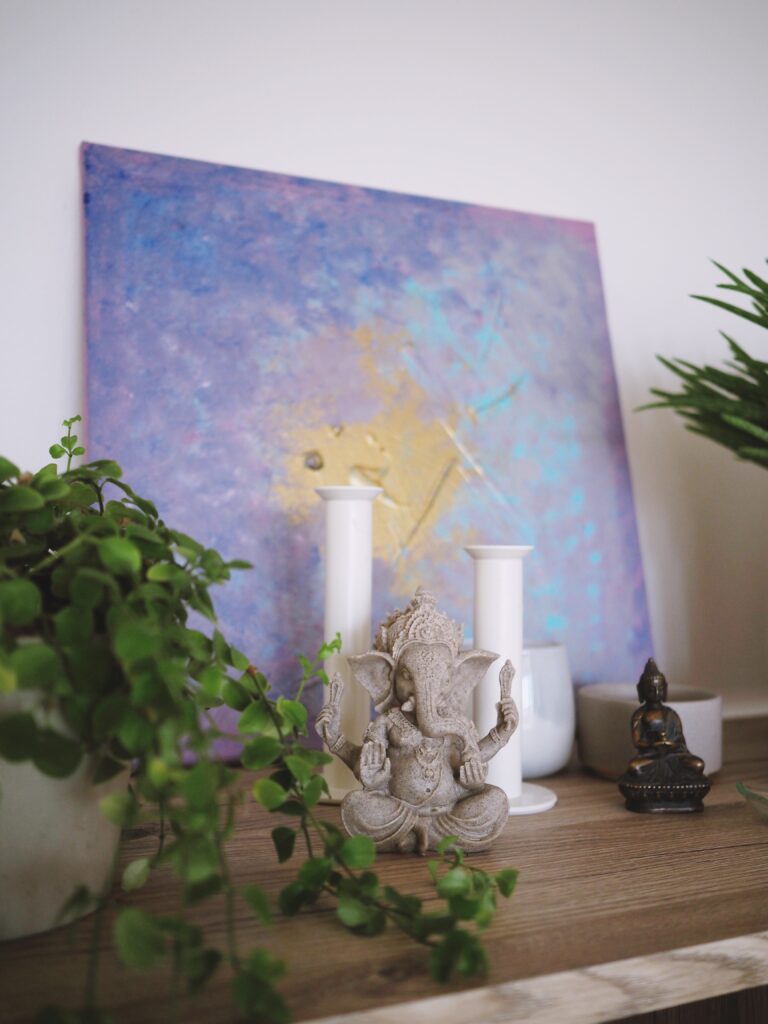
Different modern art styles such as Abstract, Expressionism, Cubism, and Pop Art offer unique visual aesthetics that can greatly enhance the visual appeal of a living space.
Here’s a closer look at each style and how artwork from these styles can be incorporated into home decor:
- Abstract Art:
- Abstract art focuses on conveying emotions, concepts, or ideas through non-representational forms and colors.
- Incorporating abstract art into home decor can add a sense of intrigue, energy, and visual depth to a living space.
- Abstract paintings or sculptures can be used as bold focal points on a feature wall or as part of a gallery arrangement to create a modern and contemplative atmosphere.
- Expressionism:
- Expressionism emphasizes conveying subjective emotions and inner experiences through vivid and expressive brushwork and bold colors.
- In home decor, expressionist artworks can bring a sense of intensity and emotion to a space, evoking a powerful visual impact.
- Hang expressionist paintings in prominent areas like the living room or hallway to make a vibrant statement and create a dynamic focal point.
- Cubism:
- Cubism presents objects and figures from multiple viewpoints, deconstructing and rearranging them into geometric forms and fragmented perspectives.
- Cubist artworks can add a sense of intellectual intrigue and geometric sophistication to home decor.
- Consider incorporating cubist-inspired sculptures, prints, or paintings into a room with clean lines and minimalistic furnishings to create a modern and visually stimulating environment.
- Pop Art:
- Pop Art draws inspiration from popular culture and mass media, often featuring bright colors, bold shapes, and iconic imagery.
- Pop Art can inject a lively and playful atmosphere into home decor, making a statement and creating a sense of nostalgia.
- Use pop art prints or artworks featuring famous personalities, popular consumer products, or vibrant patterns to infuse a room with energy and a contemporary pop culture vibe.
Incorporating artworks from these modern art styles can be achieved through various methods, such as hanging paintings on walls, displaying sculptures on shelves or pedestals, or even integrating art-inspired patterns and motifs into textiles or wallpapers.
It’s important to consider the overall style and atmosphere you want to create in your living space, ensuring that the chosen artworks align with your personal taste and the existing decor elements.
Modern Art vs Classical Art: Different Classical Art Styles

Classical art encompasses various styles and movements from ancient Greece and Rome, as well as the art of the Renaissance.
Incorporating classical art styles into home decor can bring a sense of elegance, history, and timeless beauty to your living space.
Here are some classical art styles and how you can use them in your home decor:
- Greek and Roman Sculpture:
- Greek and Roman sculptures, known for their lifelike representations of the human form, can be incorporated into home decor to add a touch of classical refinement.
- Display replicas or original classical sculptures on pedestals or in niches to create a focal point in a room.
- Consider using smaller-scale sculptures as decorative accents on mantels, shelves, or tabletops.
- Renaissance Art:
- Renaissance art, characterized by realistic depictions of figures, perspectives, and religious themes, can bring a sense of sophistication and cultural richness to your home.
- Hang reproductions or prints of famous Renaissance paintings, such as Leonardo da Vinci’s “Mona Lisa” or Michelangelo’s “The Creation of Adam,” as statement pieces in living rooms or dining areas.
- Incorporate motifs from Renaissance art, such as intricate botanical designs or religious symbols, in textiles, wallpapers, or decorative accessories.
- Baroque Art:
- Baroque art is characterized by grandeur, dramatic compositions, and ornate detailing.
- Use Baroque-inspired frames for mirrors or artworks to add a touch of opulence to your decor.
- Incorporate elements like chandeliers, elaborately carved furniture, or decorative molding with Baroque influences to create a luxurious and regal ambiance.
- Neoclassical Art:
- Neoclassical art, inspired by classical Greek and Roman art, emphasizes simplicity, balance, and symmetry.
- Incorporate neoclassical elements through architectural details, such as columns, pediments, or moldings, to create a sense of classical elegance.
- Display neoclassical-inspired paintings or prints featuring mythological scenes, classical figures, or landscapes in rooms with a refined and timeless aesthetic.
- Rococo Art:
- Rococo art is characterized by its lightness, intricate detailing, and playful subject matter.
- Incorporate Rococo elements through delicate and ornate furniture pieces, such as a gilded console table or a curvaceous armchair with floral upholstery.
- Use Rococo-inspired wallpapers or fabrics featuring pastel colors, flowing motifs, or nature-inspired patterns to create a whimsical and romantic atmosphere.
When incorporating classical art styles into your home decor, consider the overall style and ambiance you want to achieve. Whether you opt for authentic pieces or reproductions, integrating classical art styles can add a touch of sophistication and cultural heritage to your living space.
Modern Art Versus Classical Art: Similarities Between Modern and Classical Art

- Expressive Potential: Both modern and classical art has the capacity to evoke emotions, convey messages, and express the artist’s vision and ideas.
- Influences and Inspiration: Modern artists often draw inspiration from classical art, incorporating elements of classical aesthetics, themes, and techniques into their work.
- Historical Significance: Both modern art and classical art hold significant places in the history of artistic expression, with classical art establishing foundational principles and modern art challenging and redefining artistic norms.
- Appreciation of Beauty: Both modern and classical art can be appreciated for their aesthetic qualities, whether it’s the idealized beauty and realism in classical art or the innovative and visually striking aspects of modern art.
- Artistic Skill: Both styles require artistic skill, craftsmanship, and a deep understanding of the principles of art and design.
- Influence on Culture: Both modern and classical art has had a profound impact on culture and society, shaping artistic movements, influencing other artists, and reflecting the values and beliefs of their respective time periods.
These similarities highlight the shared aspects of artistic expression, historical significance, and aesthetic appreciation between modern and classical art.
Classical Art vs Modern Art: What is the Difference Between Classical Sculpture and Modernist Sculpture
- Historical Context: Classical sculpture originated in ancient Greece and Rome, while modernist sculpture emerged in the late 19th and early 20th centuries.
- Representation: Classical sculpture aimed for realistic representation, while modernist sculpture explored abstraction and symbolism.
- Materials and Techniques: Classical sculpture used traditional materials like marble and bronze, while modernist sculpture embraced new materials such as steel, glass, and found objects.
- Subject Matter and Themes: Classical sculpture depicted mythological and historical narratives, while modernist sculpture explored abstract concepts and social issues.
- Aesthetic Approach: Classical sculpture focused on harmony, balance, and idealized beauty, while modernist sculpture embraced experimentation and unconventional forms.
- Function and Purpose: Classical sculpture served various functions, including religious and commemorative purposes, while modernist sculpture prioritized artistic expression and exploration.
These differences highlight the contrasting approaches, intentions, and historical contexts of classical sculpture and modernist sculpture.
Modern Art vs Classical Art: Summarized Tips for Creating a Harmonious Blend

- Classical art can seamlessly coexist with modern interior design.
- Find a balance between classical art styles and modern design elements.
- Juxtapose classical art as focal points within predominantly modern spaces.
- Incorporate design styles that blend classical and modern elements, like neoclassical or transitional design.
- Use modern interior design as a neutral backdrop to highlight classical art.
- Select classical art pieces such as sculptures, paintings, or prints to create a cohesive and visually engaging environment.
- Celebrate the fusion of classical art and modern design by showcasing the best of both worlds.
Conclusion
Classical art and Modern interior design can work together harmoniously, creating a captivating and dynamic fusion that transcends time and styles.
By embracing classical art as a focal point or incorporating it within modern design styles, we can celebrate the rich heritage and cultural significance while infusing our living spaces with a touch of timeless beauty.
Through thoughtful integration and a keen eye for balance, we can create spaces where classical art and modern art interior design work together perfectly, enriching our homes with artistic expression and creating a truly captivating atmosphere.
Do you prefer a more classical or modern aesthetic when it comes to home decor? Why? How do you think blending classical and modern elements in home decor can create a unique and visually interesting living environment? Please share in the comments below!


